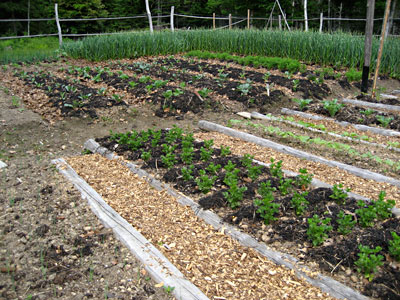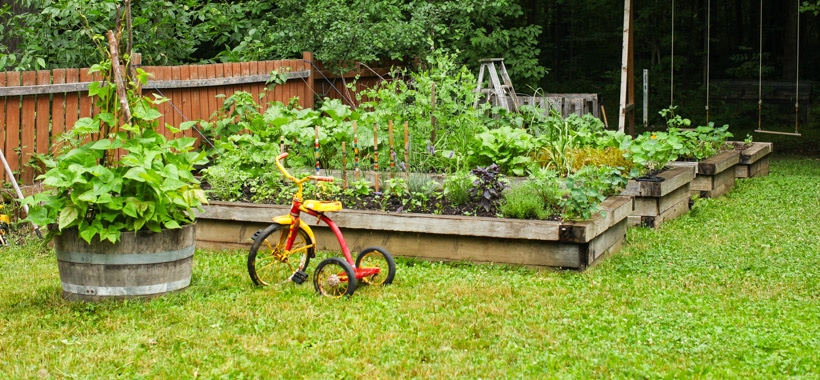Growing Fruits and Vegetables in Homestead Gardening
Growing Fruits and Vegetables in Homestead Gardening
Blog Article
Enhance Your Outdoor Area With Creative Horticulture Styles and Layouts
By checking out numerous designs, such as the captivating informality of home yards or the minimalism of modern-day appearances, one can significantly boost the atmosphere of their environments. Furthermore, integrating upright horticulture methods and sustainable methods not only enhances aesthetic charm yet additionally promotes ecological consciousness.

Home Yard Charm
Cottage gardens, frequently identified by their lavish, casual designs, embrace an unified mix of natural herbs, veggies, and blossoms, creating a vibrant tapestry of shade and fragrance. This typical horticulture style dates back to the late 19th century, stemming in England, and is treasured for its captivating, enchanting charm.
Crucial element of cottage yards consist of using perennial plants, climbing up vines, and self-seeding annuals, which add to an ever-evolving landscape. Planting in dense clusters urges a naturalistic look, permitting an eclectic mix of colors and structures. Popular blossoms such as hollyhocks, delphiniums, and foxgloves intermingle with aromatic natural herbs like lavender and rosemary, enhancing sensory experiences while promoting biodiversity.
Including rustic functions, such as weathered trellises, wooden fences, or stone paths, further improves the aesthetic of a cottage garden. This style not only focuses on beauty but additionally embraces sustainability, as many plants are chosen for their capacity to bring in pollinators and offer food. Ultimately, the cottage yard beauty exists in its relaxed, welcoming environment, urging a deep link with nature while supplying an idyllic hideaway for leisure and pleasure.
Modern Landscape Looks
While the appeal of home yards stimulates a feeling of fond memories and fancifulness, modern-day landscape appearances embrace a more streamlined and minimal strategy. This modern style emphasizes simpleness, performance, and a combination with the surrounding atmosphere. Clean lines, geometric forms, and a limited color palette define modern landscape design, permitting nature's beauty to take spotlight without unnecessary disturbances.
Materials play an important function in attaining this aesthetic. Concrete, metal, and all-natural stone are frequently made use of to create hardscapes that match the landscape rather than overwhelm it. On top of that, the mindful selection of plants is essential; ornamental turfs and native species are usually preferred for their low upkeep and ability to flourish in neighborhood conditions.
Water attributes, such as streamlined fish ponds or reflecting pools, are also indispensable to contemporary styles, supplying tranquility and a focal factor. Lasting methods, consisting of xeriscaping and making use of absorptive materials, boost the eco-friendly obligation of contemporary landscaping. Eventually, modern landscape aesthetics use a chance to develop serene outdoor rooms that show modern values while cultivating a deeper link to nature.
Vertical Horticulture Advancements
Upright gardening advancements have revolutionized the method we approach horticulture in restricted areas, allowing the farming of plants in metropolitan settings where ground area is scarce. These cutting-edge strategies and frameworks permit gardeners to make the most of vertical surface areas, transforming walls, fencings, and also terraces into lush environment-friendly spaces.
One popular technology is using modular systems, which contain interlocking panels that can be quickly mounted and reorganized - Homestead Gardening. These panels frequently come outfitted with built-in irrigation systems, making certain that plants get sufficient wetness while reducing water waste. In addition, upright gardens can include a range of plants, from blooming varieties to edible natural herbs, advertising biodiversity and enhancing appearances
Another notable innovation is the integration of smart innovation, such as sensors that check dirt moisture and nutrient degrees. This modern technology enables exact treatment customized to the needs of individual plants, making sure optimal growth and wellness. Moreover, lightweight materials and vertical planters made from recycled products contribute to sustainability while lowering the physical concern of conventional horticulture.
Sustainable Gardening Practices
Sustainable horticulture methods have become an essential method for gardeners seeking to lessen their environmental influence while boosting the health and wellness of their environments. These practices concentrate on the mindful monitoring of natural deposits, promoting biodiversity, and cultivating a resilient landscape.
One crucial element of lasting gardening is dirt wellness. Using natural garden compost, mulching, and crop turning improves the soil, advertising useful microorganisms and reducing the requirement for chemical fertilizers. Additionally, indigenous plants are motivated, as they need much less water and are extra resistant to local insects, therefore lowering dependence on chemicals.

Furthermore, lasting gardening urges using recycled products for garden structures and pathways, minimizing waste and ecological impact. By embracing these practices, garden enthusiasts can develop a growing exterior space that harmonizes with nature, making sure both personal enjoyment and environmental responsibility.
Themed Yard Inspirations
Creating a themed garden can change a common exterior space right into a fascinating sanctuary that reflects personal design and passions. Themed yards supply a distinct opportunity to share creativity while improving the aesthetic allure of one's landscape. Popular themes consist of Japanese Zen gardens, which emphasize serenity via carefully prepared rocks, water attributes, and minimalist plantings.
One more inspiring theme is the cottage garden, defined by an informal format loaded with an abundance of colorful flowers and great smelling herbs. This style advertises biodiversity and draws in pollinators, making it both environmentally valuable and stunning.
For those with a fondness for journey, a tropical yard can stimulate a holiday feel, go to this web-site featuring bold vegetation, dynamic blooms, and possibly also a little water feature to resemble a hotel environment.
Alternatively, a themed yard can attract inspiration from literature or background, such as a Shakespearean yard that incorporates plants discussed in the Bard's jobs.
Picking a motif not only provides instructions in plant selection and format however also develops a cohesive atmosphere that welcomes expedition and enjoyment, making outside rooms truly distinctive.
Conclusion

Incorporating rustic attributes, such as weather-beaten trellises, wood fencings, or stone pathways, further boosts the visual of a cottage garden. In addition, upright straight from the source gardens can incorporate a selection of plants, from blooming species to edible herbs, promoting biodiversity and boosting visual appeals.
Creating a themed yard can transform an ordinary outside area into a captivating sanctuary that reflects individual style and interests. Themed gardens use an unique possibility to express creative thinking while enhancing the aesthetic charm of one's landscape. The appeal of home yards, the sleekness of contemporary landscapes, ingenious vertical horticulture techniques, sustainable methods, and themed gardens each contribute one-of-a-kind components that promote both appeal and functionality.
Report this page